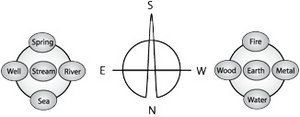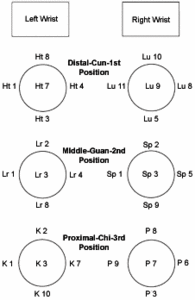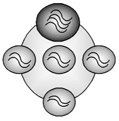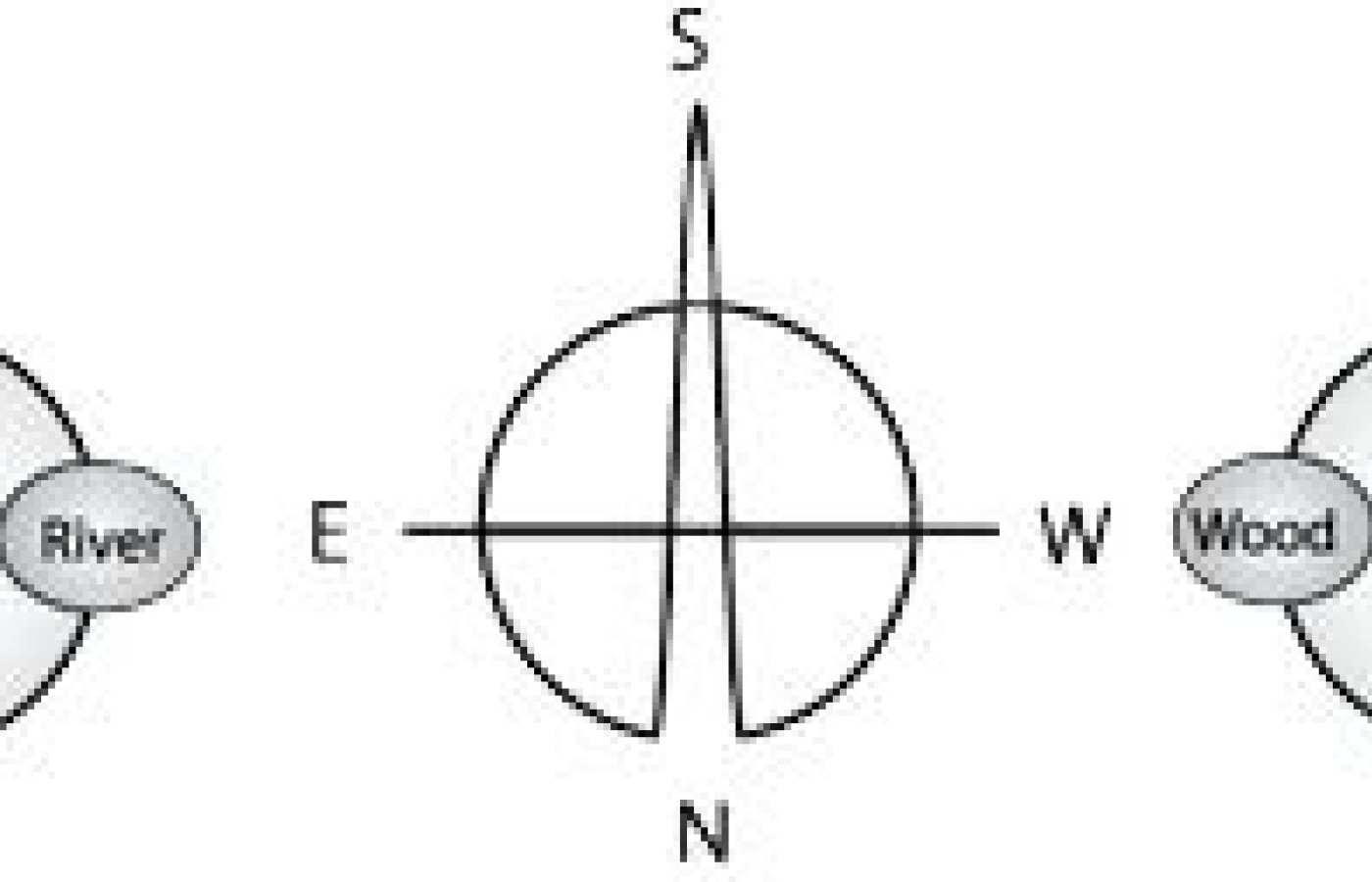Whether you accept it, avoid it or live somewhere in between, insurance coverage has become a defining issue for our profession. Patients increasingly expect to use their benefits, practitioners want to be compensated fairly for their time and expertise, and the system itself remains – at best – fragmented. The encouraging news is that coverage has expanded in meaningful ways. The challenging news is that reimbursement, across the board, remains inadequate.
Pulse Diagnosis Using the Elemental Compass Method
The "elemental compass method" is exciting because it is effective, powerful, and easily grasped. It can lead directly to the root imbalance by palpation of the four directions and the center.
Roots
Classical: The Yellow Emperor's Classic is a timeless body of wisdom from which this method is extracted. In the chapter called "The Golden Cabinet of Collected Truths," the basic correspondences of the five phases are laid out in detail. The elemental compass method, however, is hidden between the lines.
In other discussions from the Yellow Emperor's Classic, the Emperor faces south and the influences of heaven and earth are allotted to the human being. The compass directions provide reference points through which the influences of heaven and earth enter the human being. This set of influences is absolute and remains steadfast, such that east and west do not change from wrist to wrist. Rather, the left side is always east and the right side of each position is always west, regardless of where the person moves.
Contemporary: The late great Dr. John H.F. Shen often shared the importance of rolling the fingers or "searching" in each of the directions. For this, he used a body image on the radial artery. In practice, Dr. Shen rolled in specific directions for different body parts, and not in every direction. This could be called a "holographic pulse model" in which the various parts of the body are viewed through the pulse.
In contrast, the elemental compass method uses the correspondences of the five phases rather than anatomical structures. The advantage of this method is that it allows one to evaluate the influences when sensations are palpated in any direction. In addition, one can select immediate acupuncture point correspondences, thus arriving at specific methods of intervention. While influenced by Dr. Shen's methods, this work is distinctly different and is a direct interpretation of "The Golden Cabinet of Collected Truths."
Assessment Using the Elemental Compass Method
Performing this diagnostic procedure is like using a joystick from a video game. To identify this obstruction, place the finger in the center of the position, then palpate in the four cardinal directions - distal, proximal, left and right - plus center. Identification of the area that has the dominant signal, or is most congested and full, will reveal the element that is influencing the viscera. It is important to "follow" the sensation of the primary position so that one is not feeling sensations from an adjacent position.
What follows is perceived from the patient's point of view:
- North (water) is represented by the proximal portion of each position.
- Fire (south) is found in the distal portion of each position.
- Wood (east) is found in the left portion of each position.
- Metal (west) is found in the right aspect of each position.
- Earth is in the center of the position.

Treatment
If the qi is depressed, it may be freed by focusing treatment in the area where the stagnation is taking place. This method of treatment is especially useful if one does not wish to transfer qi from one organ to another. The principle is to balance the qi within the organ itself.

In a previous edition of Acupuncture Today,1 the night-time wei qi cycle was discussed (the article can be reviewed at AcupunctureToday.com). This treatment strategy works particularly well for freeing the flow of qi if it is stagnant along the wei qi cycle. For instance, if the night-time wei qi is not flowing well along the controlling cycle, and the pulse is strong in the spleen and weak in the kidney, then focus treatment on the spleen before attempting to supplement the kidney.
This approach is based on the "doctrine of correspondences" as referred to by Unschuld.2 Use the point that corresponds to the element with no concern for supplementing or reducing - there is no direct manipulation of the qi. Acupuncture tends to be homeostatic, therefore even treatment calls forth the qi to correct itself within the area of imbalance. By needling the elemental point that is more full or congested in the elemental compass model, the body's innate sensibility is directed to the area of imbalance, and a natural correction of the qi takes place. Treatments are then developed to include other features of the case.
This method does not necessarily lead to a direct biomedical conclusion. However, it does present a system for gaining insight into the deeper imbalances from a view of the elemental influences. That said, the findings often reveal the immediate medical concerns of the patient, especially after identifying the organ with the most significant amount of stagnation or heat. In addition, these findings can lead one directly to an effective intervention.

Once the location of the center of the impulse is identified, select the elemental point on the channel that relates to the position. For instance, if the liver (left middle) position has a sensation of fullness, slipperiness or forcefulness in the distal portion, use the fire point on the liver channel, Liver 2. Then go back to the pulse immediately and observe the change in the primary pulse position. If the pulse regains balance and even distribution, this indicates a useful point on the channel. This method assures an immediate positive influence on the corresponding organ. However, such a method must be employed in the context of a full diagnosis, such that it is used to target effective intervention and determine efficacy to a certain extent.
Case Study
A 45-year-old male patient had insomnia for two years, with frequent waking through the night. In addition, he had abdominal bloating after meals and fatigue, with a tendency to overeat. The tongue had tooth marks and was dry, with a yellow coat in the center. The TCM diagnosis was spleen qi vacuity with stomach heat. However, treatment based on boosting the spleen qi and clearing stomach heat did not resolve the insomnia.
Frequent waking is associated with the flow of wei qi because it tends to be rapidly oscillating. Comparing pulses along the controlling cycle revealed a strong right middle position and a weak right proximal position. This indicates a possible blockage in the flow of wei qi from earth to water. Application of the elemental compass model to the spleen position in the right middle revealed a dominant and more full sensation in the distal aspect of the spleen position. This is a disturbance in the fire component of the spleen. In this case, I needled the fire point on the channel, Spleen 2, and built the rest of the treatment from that perspective. This was accomplished by adding the mu point of the spleen, Liver 13, and the earth point on the small intestine channel, Small Intestine 8. That night, the patient slept the best he had for two years.
Epilogue
The elemental compass method places a compass image over the pulse so that the correspondences of the five phases are then laid out on the pulse in a map-like fashion on each pulse position. This work is the synthesis of personal transmission, clinical observation, and analysis of classical passages from the Yellow Emperor's Classic. This method should be used in the context of a fully developed diagnosis and treatment plan. It is a portion of a forthcoming book on pulse diagnosis and treatment. I invite you to explore this map with an open mind and determine for yourself whether this has clinical relevance for you.
If you are interested in exploring this work in person, training is available. Please contact me for more information.
References
- acupuncturetoday.com/archives2002/may/05morris.html.
- Unschuld P. Nan Jing, University of California Press.



